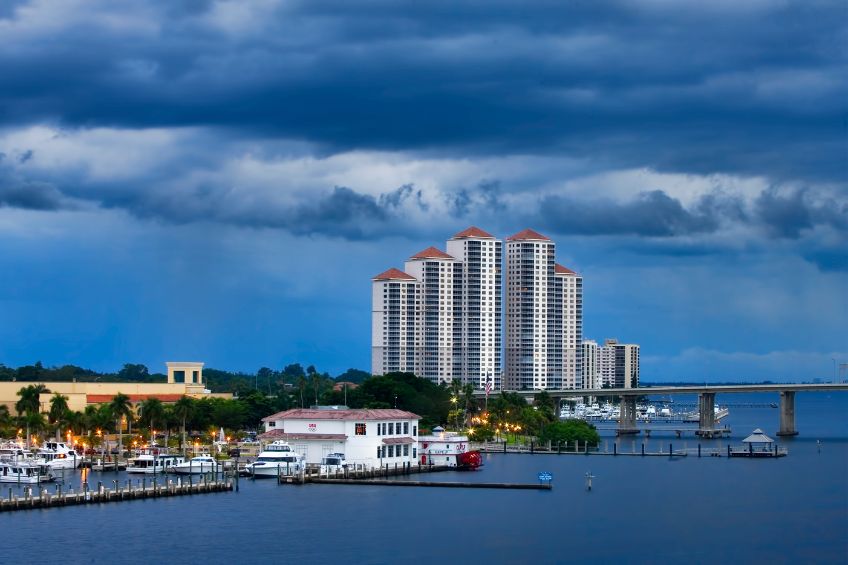
You’ve Got Water. Batteries. Flashlights. But What About the Pests?
Preparing for Hurricane Pest Pressures Before and After the Storm
When a hurricane is approaching, most people stock up on essentials—water, batteries, flashlights, and food. But one critical issue often gets overlooked: hurricane pest pressures. After the storm passes, pests and wildlife surge as they search for new shelter, food, and dry ground.
Storms don’t just leave behind debris and flooding—they disrupt local ecosystems. As pests are displaced from their usual habitats, homes and businesses become prime targets. Standing water, fallen trees, roof damage, and broken structures create ideal conditions for infestations. Preparing for hurricane pest pressures can help protect your home, your health, and your peace of mind.
Why Pest Pressures Increase After a Hurricane
Hurricanes change everything—drainage systems flood, landscaping is uprooted, and buildings are damaged. This chaos gives pests new access points and opportunities to thrive. Warm temperatures and lingering humidity create perfect breeding conditions, especially for insects.
As these pests lose their nests or burrows, they often seek refuge indoors. That’s why homeowners often experience a noticeable increase in pests shortly after a storm. Ignoring hurricane pest pressures can lead to infestations, health risks, and costly repairs.
Mosquitoes: Breeding in Standing Water
One of the biggest contributors to hurricane pest pressures is the mosquito. After a storm, pools of standing water collect in gutters, flowerpots, debris, and even bottle caps—becoming breeding grounds for mosquitoes almost instantly.
A single female mosquito can lay hundreds of eggs in just a small amount of water. Within a few days, those eggs hatch into biting adults. Mosquitoes aren’t just a nuisance—they can spread diseases like West Nile virus, Zika, and dengue.
To help reduce mosquito breeding:
-
Remove standing water from all containers
-
Clean out gutters and downspouts
-
Schedule professional mosquito treatments quickly after a storm
Ants and Roaches on the Move
Floodwaters flush ants and cockroaches out of their nests and sewer systems. As a result of hurricane pest pressures, these insects often move into homes, searching for dry shelter and food.
Fire ants are especially aggressive in the Southeast. After flooding, they form floating colonies and bite anything in their path. Meanwhile, roaches—especially German and American species—make their way indoors, drawn by food waste and moisture.
To manage ants and roaches:
-
Seal cracks in your foundation and walls
-
Store food in airtight containers
-
Clean drains and under-sink areas
-
Use bait or barrier treatments where activity is high
Termites: Silent and Costly Damage
While termites may not show up immediately after a storm, they’re one of the most damaging results of hurricane pest pressures. These wood-destroying insects thrive in damp, humid environments. Storm-damaged or water-soaked wood becomes a prime target for termite colonies looking to expand.
Formosan and subterranean termites are especially common in storm-prone areas like Florida. They can remain hidden for months while silently chewing through your home’s structure.
To reduce your termite risk:
-
Schedule a termite inspection after flooding
-
Repair leaks and dry out affected areas
-
Keep crawl spaces well-ventilated
-
Consider a preventative termite treatment plan
Rodents and Wildlife Seeking Shelter
Hurricanes often destroy natural habitats, leaving rodents and wildlife scrambling to find new places to nest. Mice, rats, raccoons, squirrels, and opossums may enter attics, garages, sheds, and crawl spaces—becoming a major part of post-storm hurricane pest pressures.
These animals can cause serious damage by chewing wires, insulation, and HVAC systems. Even worse, they pose health risks through droppings, urine, and parasites. Wildlife exclusion becomes essential to remove animals humanely and prevent them from returning.
Wildlife and rodent prevention tips:
-
Seal entry points with mesh or steel
-
Remove food sources like pet food or garbage
-
Schedule professional exclusion services if needed
Hidden Entry Points to Watch For
Many pests and animals gain access to your home through damage you might not notice right away. Wind and debris from a hurricane can break soffits, lift shingles, or knock over vents. These small vulnerabilities can quickly become entry points for pests.
Common post-storm entry points:
-
Attic vents and louvers
-
Chimneys without caps
-
Garage door seals
-
Crawl space vents
-
Gaps around utility lines
A full inspection—especially in the attic and along the roofline—can help identify and seal these weak spots. This step is key in reducing long-term hurricane pest pressures.
Health Risks Associated with Hurricane Pest Pressures
Post-storm pest issues aren’t just a nuisance—they’re a real threat to your health. Mosquitoes spread viruses. Rodents and wildlife can transmit bacteria and parasites. Roaches can trigger asthma and allergy symptoms, especially in children.
Health risks include:
-
Mosquito-borne illnesses like West Nile or Zika
-
Hantavirus or leptospirosis from rodent droppings
-
Respiratory issues from cockroach allergens
-
Mold growth from pests nesting in damp spaces
Addressing hurricane pest pressures early can prevent both physical damage and potential medical problems for your family.
How Homeowners Can Prevent Pest Problems
Prevention is the most effective way to reduce hurricane pest pressures before they get out of hand. A little preparation and post-storm maintenance can go a long way.
Actionable prevention tips:
-
Clear debris: Piles of leaves or branches are perfect for nesting
-
Inspect the roof: Check for missing shingles and broken vents
-
Seal up gaps: Use caulk and weatherstripping around doors and windows
-
Dry it out: Run dehumidifiers in damp spaces and repair leaks
-
Maintain your yard: Keep plants and mulch away from the foundation
Why Professional Pest Control Makes a Difference
While DIY solutions can help, hurricane pest pressures often require expert attention. Licensed pest control professionals know what to look for, how to identify problem areas, and how to treat them thoroughly and safely.
Professional pest control services include:
-
Detailed inspections for hidden pest activity
-
Safe and humane wildlife exclusion
-
Targeted treatments for mosquitoes, termites, and more
-
Ongoing monitoring to prevent reinfestation
By acting quickly with professional support, you can stop infestations before they cause more damage—and gain peace of mind after the storm.
Final Thoughts: Don’t Let Pests Be Part of the Recovery
Hurricane season is unpredictable, but pest activity afterward is almost guaranteed. Knowing how to recognize and respond to hurricane pest pressures is an essential part of post-storm recovery.
Take action early. Prevent costly repairs. Keep your family safe.
📞 Call (800) 225-5305 or visit TurnerPest.com to schedule your post-storm pest inspection or treatment today.



